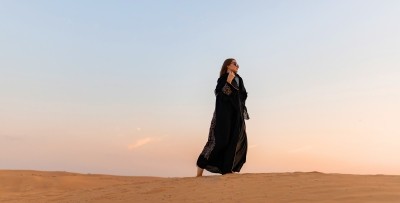Contents
- 1 Cosmetics Design-Europe (CDE) Can you tell us more about the current landscape of the Middle East beauty market, with a focus on Dubai?
- 2 CDE: Why is this region, in particular Dubai, a key focus for the beauty industry right now?
- 3 CDE: What are beauty and personal care consumers demanding in this region?
- 4 CDE: Do foreign beauty companies need to adapt their products for this market? If yes, in what ways?
- 5 CDE: What other insights can you share on the beauty market in this region?
Image: Getty As the Beautyworld Middle East event will kick off in Dubai in late October, we asked a market expert what cosmetics brands should know about the current landscape in the growing Middle Eastern market, with a focus on Dubai.
Over the past decade there has been a trade evolution in the Middle East, and particularly in the UAE.
The region has evolved from a wholesale trading hub into a brand-building hotspot, with retailers enhancing their presence both in stores and online.
Established brands are facing increased competition from large chains entering the market, while indie brands are thriving by focusing on niches such as colour and care hybrids and individualised makeup, which is particularly favoured by Gen Z and Millennial consumers.
Following the footsteps of western markets, consumer demands are also now focusing on sustainability, as well as products that are designed to suit local needs, such as colour cosmetics in darker colours, or cooling formulations designed to beat the desert heat.
We spoke to private label manufacturer Schwan’s Cosmetics EMEA sales VP, Tobias Friedrich, to find out more.
Cosmetics Design-Europe (CDE) Can you tell us more about the current landscape of the Middle East beauty market, with a focus on Dubai?
Tobias Friedrich (TF): The situation has changed in the Middle East during the last 10-15 years. It’s gone from wholesale to brand.
Wholesale was taking care of distributing beauty products across the marketplace. Retailers have now taken over this position. They are now delivering the products to the consumers and creating the space for telling a story: brand building. They are much better at developing the brand in a meaningful direction, from just a brand to a brand that matters to consumers.
The consumers are leading this change because they are very young. They go to the shopping mall because that experience is still important to them; it’s a hobby. They enjoy the experience of shopping; it’s driving beauty brands in the region to emphasise physical stores and the in-store experience of trying make up.
Additionally, it’s a population that grew up with social media. The difference from other markets is that when you grow up with social media in the Middle East, you take it as a preferred source of information. They’re always on the phone, following what beauty products influencers are launching.
As a brand-building hotspot, the region is driven by indie brands. They decide if they go into a premium, sophisticated design. This doesn’t need to be traditional luxury in the way that D&G, Chanel, Tom Ford are luxury. It can be a very modern look and feel.
Premium products are different from luxury. Indie brands driving the market in the Middle East are ones with premium products.
CDE: Why is this region, in particular Dubai, a key focus for the beauty industry right now?
TF: No region implements innovation as fast as Dubai. The beauty market in the Middle East is at the forefront, where innovations are recognised and adopted faster due to shorter decision-making processes. This is not just about fast beauty but about sustainable innovation.
The innovation quotient in the Middle East is extremely high, making it a strong market for cutting-edge advancements and real opportunity for growing beauty brands.”
CDE: What are beauty and personal care consumers demanding in this region?
TF: On top of availability, consumers want sustainability, and premium products. One challenge for manufacturers is maintaining high-quality while staying with fast-moving trends. This challenge is valid all across all markets.
I dislike the phrase ‘fast beauty’, which is connected to a throwaway mentality. It’s not sustainable. Most of us know the definition of sustainability when it comes to products. But for beauty brands, from a sales point of view, sustainability also means profitability, convincing consumers to buy something again and again. It’s important to create loyalty. This is only possible with a good value-price proposition, a reliable supply chain behind the product, and the highest quality and innovation.
CDE: Do foreign beauty companies need to adapt their products for this market? If yes, in what ways?
TF: We definitely have cases of adapting products for this market. For example, in the lip category we have a new product coming, where specifically for the Middle East, we’ve emphasised the sensorial experience, incorporating ingredients that give not only desired effects and looks, but also give a stronger tingling sensation.
In this market, the sensorial aspect is very important for consumers. Across application areas, we have examples, such as cooling eye shadows and our Lashboost serum liner, which doubles as a very black eyeliner and was developed specifically for this region, as we have intensified the black without using carbon black.
TF: There is a strong focus on colour and care, multi-purpose products, and eco-friendly packaging. Along with clean, cruelty-free ingredients, sustainable supply chains are gaining momentum. This is again driven by younger, more conscious consumers with greater environmental awareness.
Omni-channel retail and E-commerce are also growing in the region. More and more beauty platforms and apps are offering virtual try-ons. This gives the possibility to personalise advice on how consumers can use makeup based on what products they like to use. But at the same time, the physical retail experience does still matter here.
Luxury and prestige brands continue to flourish in the region. There’s also a strong appetite for premium colour cosmetics, and local influencers boost the premium segment significantly.


